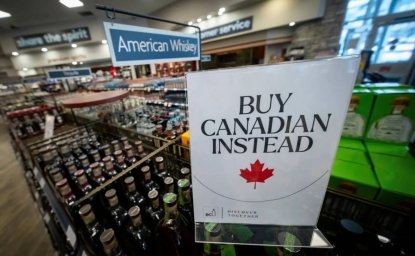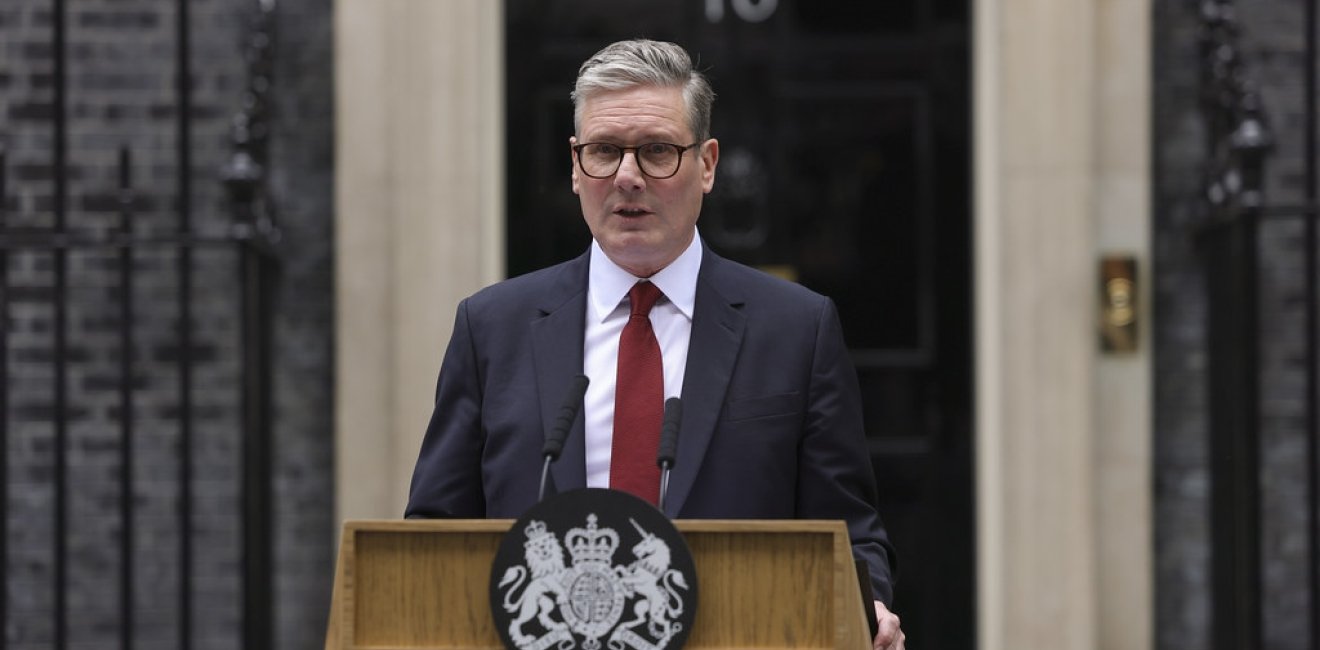Two contrasting records were broken in this year’s general election in the United Kingdom. They were the culmination of five exceptionally dramatic years in UK politics - and pose challenges for both main political parties as they prepare for the next five years.
The first record is that more people voted to remove the government than ever before. Just 24 per cent backed the Conservatives, while 76 per cent voted for another party. The second record is that only 34 per cent backed Labour. This is the lowest share won by any party securing an overall majority in Parliament, however small – let alone a party winning a landslide in seats. Sir Keir Starmer, Britain’s new prime minister, leads a total of 412 members of parliament, a majority of 174 over the 238 MPs won by all the other parties together.
This was an emphatic rejection of Conservative rule after 14 years in power, but far from an enthusiastic endorsement of Labour. If it is possible to sum up the mood of the typical voter in a single word, then in 1997, when Tony Blair led Labour to a similarly majority in Parliament, their emotion was optimism. This year it is relief.
Almost everything that could go wrong for the Conservatives did go wrong. Its story is one of instability and failure: five prime ministers in eight years, the highest taxes for more than 70 years, soaring immigration, an economy weighed down by Brexit. The outcome was that the party’s vote collapsed from 44 per cent in 2019 to just 24 per cent. But by far the biggest beneficiary was the right-wing Reform Party, which won 14 per cent, 12 up from its predecessor, the Brexit Party, five years ago. Parties to the left of the Tories made smaller gains: Labour up two points, the Liberal Democrats up one, the Greens up four.
However, in terms of elected MPs, it was Labour (211 gains) and the Liberal Democrats (64) that cleaned up. Reform has just five seats, despite winning 600,000 more votes than the Liberal Democrats. In district after district, Reform picked up enough votes from the Conservatives to hand victory to Labour, which often won no extra votes than in 2019. As for the Liberal Democrats, they benefitted from a highly targeted campaign. They picked up the votes where they needed, whereas Reform’s larger total vote was more thinly spread.
Altogether, then, distribution of MPs in the House of Commons looks distinctly odd. It’s true that people voted for, and got, an overwhelmingly anti-Conservative Parliament; but whereas Labour won less than half of the non-Conservative votes, they have an overwhelming majority of the non-Conservatives MPs.
In practical terms, Starmer has virtually untrammelled power. Constitutionally, the prime minister is subject to the will of Parliament. When they lose the support of MPs, they are forced out – as were Theresa May, Boris Johnson and Liz Truss in recent times. Formally, Britain’s Prime Minister is less secure than America’s president. But Starmer has the kind of large parliamentary majority that gives him a freedom that most US presidents would envy.
The constraints on Starmer are not political but economic. During the recent election, he talked frequently of the need for “a decade of national renewal”. He will need two parliaments – ten years – to achieve his goals because he will not have enough money to make the difference he wants in one parliament. His aim is to spend the coming five years laying the groundwork for faster growth and therefore healthier government finances. If things go well, voters will start to notice improvements to public services such as schools and hospitals, and measures to reduce poverty, before the next election. The big benefits will have to wait for the second term, after the next election.
The risk to this strategy is obvious. Voters might not feel enough has been achieved in Starmer’s first term to give him a second. He is lucky that 34 per cent was enough to give him a victory this time. He may be less lucky next time, and need many more votes to stay in office. Public dissatisfaction with the pace of progress could see his massive majority melt away.
To prevent that happening, Starmer needs to persuade voters to be patient. He is unlikely to sing the campaign song that helped to propel Blair to victory 26 years ago: “things can only get better”. He needs something less histrionic but in substance closer to Churchill’s warning in May 1940, in his first speech to MPs as prime minister: “I have nothing to offer but blood, toil, tears and sweat”.
The challenge now facing the Conservatives is, if anything, tougher than that facing Starmer. One reason they have dominated the past century is that Britain’s centre-left was divided between the Labour and Liberal traditions. Now it is the right that is fatally divided. In some weeks’ time, the Conservatives will choose a new leader. Their most urgent task is to neutralise Reform and reunite the right.
That much is obvious. The critical question is how? Different leading Conservatives have offered three different strategies: make peace with Reform as a prelude to a merger; marginalise Reform by moving to the right, especially on immigration, Europe and cutting back taxes and public spending; defeat Reform by attacking their politics effectively, and move back towards the centre.
Among the diminished band of Conservative MPs, there is little appetite to marge with Reform. Many would favour a careful return to the centre ground. Will they get their way? Who the party choose as its new leader will be decisive. Its rules give MPs the power to pick the top two candidates. Local party members decide who they prefer. In recent times, this particular electorate has proved to be more right-wing than the party’s MPs.
It is likely that the outcome of this two-stage process will be a leader who is right-wing on immigration, Europe and tax-and-spend, but keen to marginalise Reform. Even if they succeed in defeating Reform, they would risk being seen to desert the centre ground.
Even if voters grumble at the next election that life hadn’t improved as much as they hoped, they are unlikely to turn in sufficient numbers to a clearly right-wing party to force Labour out of office. A politically united right will not win if the cost of unity is the desertion of its more traditional, less ideological voters to a Labour Party that has proved its centrist credentials – even if voters are frustrated by the extent to which their daily lives have improved.
Reliance on continuing Conservative unpopularity is not Starmer’s ideal scenario. But it might be enough to give him the second term he needs.
Author


Global Europe Program
The Global Europe Program is focused on Europe’s capabilities, and how it engages on critical global issues. We investigate European approaches to critical global issues. We examine Europe’s relations with Russia and Eurasia, China and the Indo-Pacific, the Middle East and Africa. Our initiatives include “Ukraine in Europe”—an examination of what it will take to make Ukraine’s European future a reality. But we also examine the role of NATO, the European Union and the OSCE, Europe’s energy security, transatlantic trade disputes, and challenges to democracy. The Global Europe Program’s staff, scholars-in-residence, and Global Fellows participate in seminars, policy study groups, and international conferences to provide analytical recommendations to policy makers and the media. Read more

Explore More
Browse Insights & Analysis
Greenland’s New Governing Coalition Signals Consensus

The Future of France's Far-Right Party

Ukrainian Issue in Polish Elections

